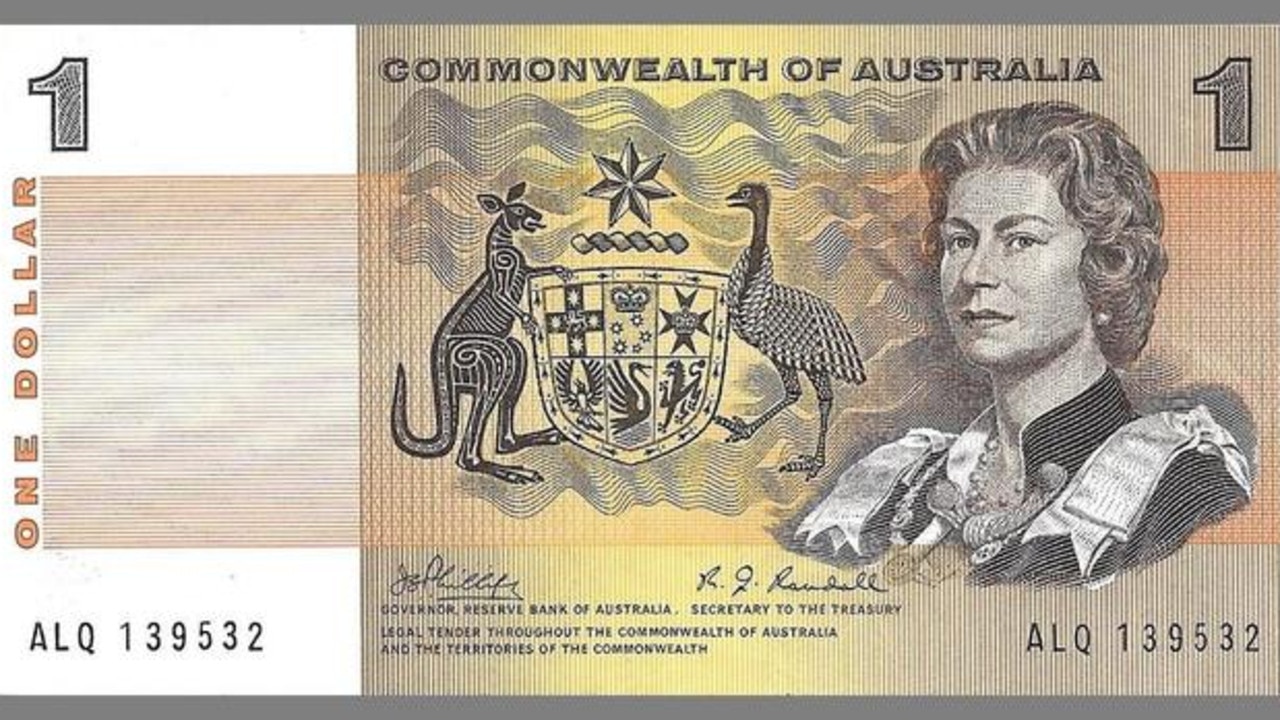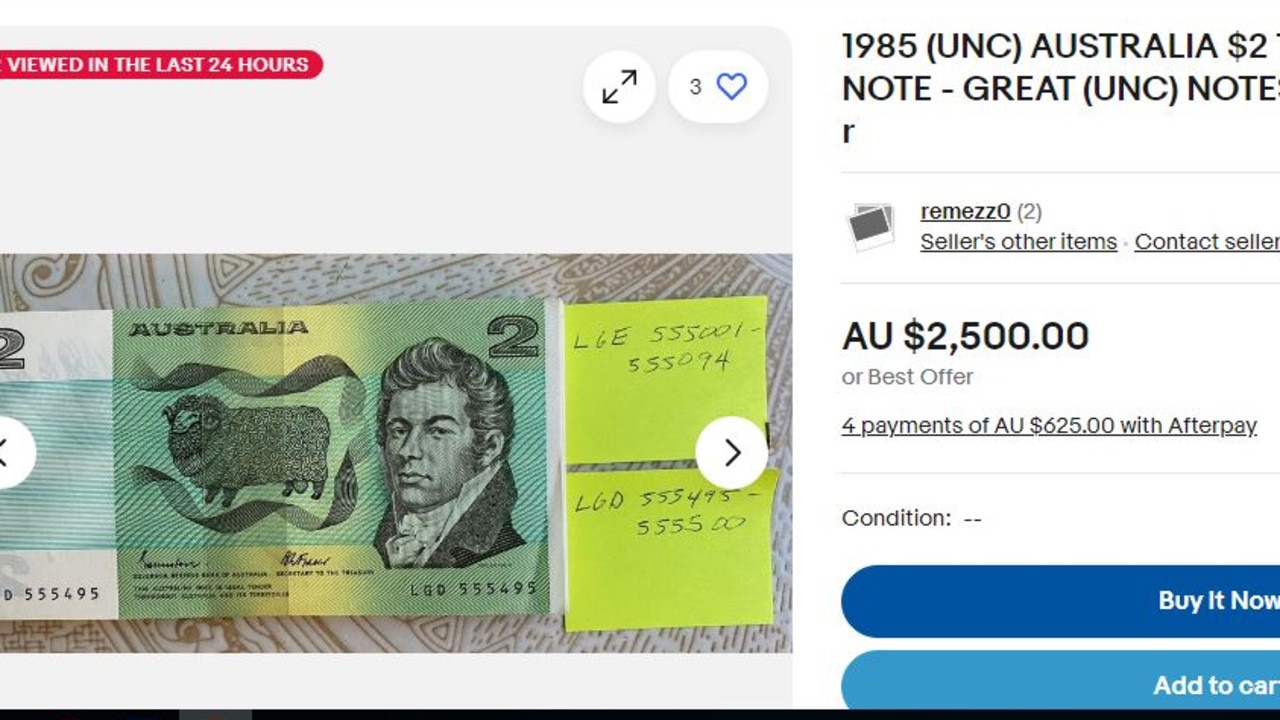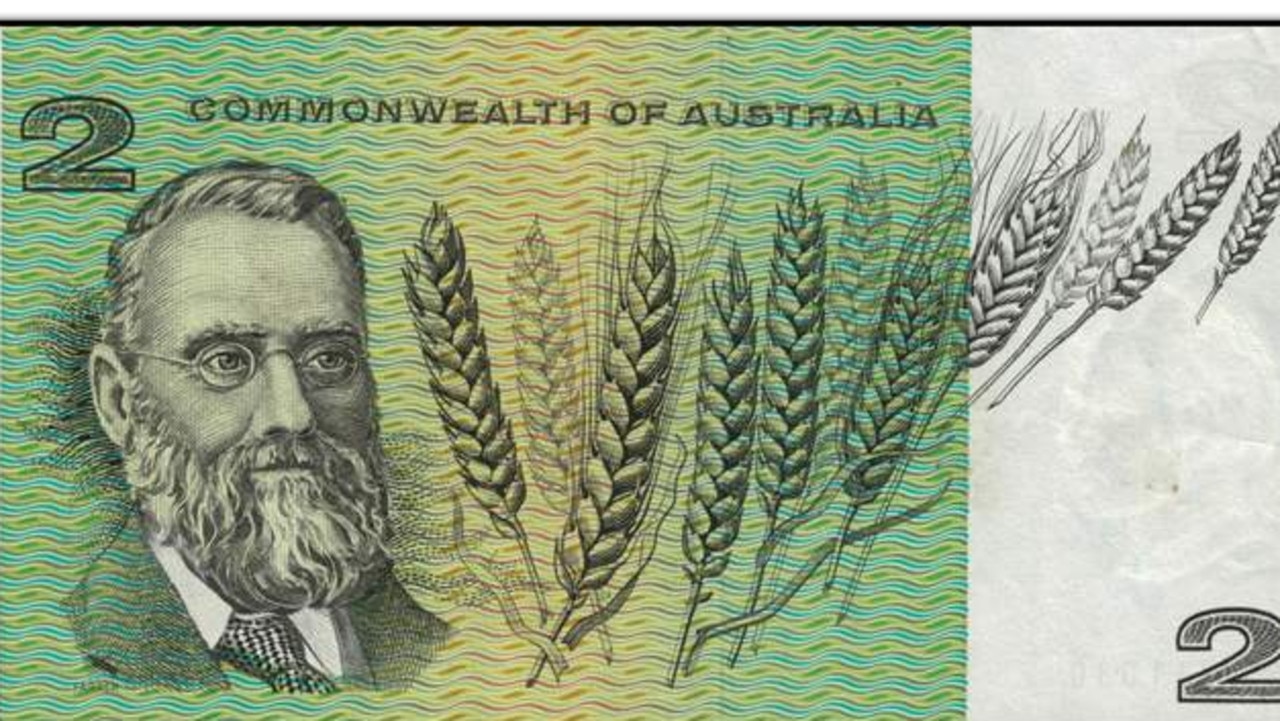Rare Australian $1 and $2 notes are worth big money today if they have this special feature
Australian $1 and $2 paper notes are popping up online for sale for more than 1000 times their old value. Discover the special feature that makes them worth a bundle today

READING LEVEL: GREEN
There is an old saying that goes — it takes money to make money. And when it comes to old money, that is particularly true.
If your parents or grandparents have a stash of old Australian banknotes lying around in their cupboard or attic*, you could sell them to make a small fortune*.
Released in 1966 with the introduction of decimal currency*, the $1 and $2 notes were made of paper with watermarks to stop counterfeiters.
Today, Australian $1 and $2 notes are popping up online for sale for more than 1000 times their old value.

Barely anyone born after 1980 remembers them because they were removed from circulation* after the introduction of the $1 and $2 coins from 1984.
But if you manage to find one of these rare notes these days, they could be worth a bundle if they have early serial numbers*.
The notes sell online for up to $3500, meaning if you found three somewhere in the attic with a face value of less than six dollars, you could make more than $10,000 in today’s money.
Old paper bank notes can only fetch thousands of dollars from dealers and collectors if they are in good or mint* condition and feature those rare or early serial numbers.

WHO APPEARS ON THE OLD NOTES?
The $2 note featured two famous men.
On one side was the bearded William Farrer, an agriculturalist* who developed a strain of wheat that became known as the Federation Strain, earning him the title of the Father of the Australian Wheat Industry.

On the other side was one of Australia’s most troublesome and cunning* colonists* — John Macarthur, a rich entrepreneur* who was important in the founding of Australia’s wool industry.
He arrived in NSW in 1790 on the Second Fleet* as an officer and quickly became an important figure. But his hot temper led him into trouble.
He stole a case of alcohol from the government, which landed him in a feud* with the leader of the time, Governor Arthur Phillip.
When he was dropped down in rank, Macarthur and his soldiers started a violent campaign to gain control of the courts. He later tried to blackmail* a superior officer, leading to a pistol fight in which Macarthur shot the other man in the arm and he was arrested.

The report about all of Macarthur’s misdeeds* — including stealing a large sum of money — was to be sent to London with the hope of sending him to jail, but it was mysteriously lost in transit, with Macarthur’s supporters believed to have destroyed it.
Despite all this, Macarthur managed to stay in NSW where he bought merino sheep and lived a life of great wealth. He returned to England where he was declared “a lunatic” and placed in a mental institution, dying in 1834 at the age of 66.
The $1 notes were not as controversial* featuring the face of Queen Elizabeth II on one side and Aboriginal artwork on the other.


GLOSSARY
- attic: a space or room inside the roof of a building
- fortune: a large amount of money or assets
- decimal currency: a system of currency in which the monetary units are parts or powers of ten
- circulation: money used to buy or sell things
- serial numbers: a unique number to identify each note
- mint: perfect
- agriculturalist: farmer
- cunning: wickedly clever
- colonists: a settler of a colony
- entrepreneur: a person who sets up a business or businesses, taking on financial risks in the hope of profit
- Second Fleet: a convoy of six ships carrying settlers, convicts and supplies to Sydney Cove, Australia in 1790
- feud: fight
- blackmail: demanding payment from someone in return for not revealing compromising or damaging information about them
- misdeeds: a wicked or illegal act
- controversial: something that causes arguments
EXTRA READING
Errors on coins make them worth thousands
Bluey $1 coins go gangbusters
Teen goes fishing, catches $1 million
QUICK QUIZ
1. When were paper $1 and $2 notes introduced in Australia and what was the currency called?
2. What two features make the paper notes worth 1000 times more?
3. What nickname did William Farrer earn from his work?
4. How and when did John Macarthur travel to Australia from England?
5. Which British royal appeared on the $1 note?
LISTEN TO THIS STORY
CLASSROOM ACTIVITIES
1. Old money, new money
If you were lucky enough to find a collection of these old banknotes in your home from your parents or grandparents, add up the possible value of these notes if you took them to a collector to cash in, assuming they were the early serial numbers and in very good condition.
Old notes:
10 x $1 notes
10 x $2 notes
Today’s value:
Show your workings —
$
Profit Made: $
Time: allow 15 minutes to complete this activity
Curriculum Links: Mathematics, Critical and Creative Thinking
2. Extension
If a new banknote were to be released this year, or a person was to be replaced on a current note, who would you nominate to feature on it? Give a name and outline why you think they deserve to be featured on our Australian currency.
Time: allow 10 minutes to complete this activity
Curriculum Links: English, Mathematics, History, Personal and Social, Critical and Creative Thinking
VCOP ACTIVITY
1. Punctuation thief
Pick a paragraph from the article, or about 3 sentences together if that’s easier, and rewrite it without the punctuation. At the bottom of the page write a list of all the punctuation you stole and in the order you stole it. For example; C , . C .
Then swap your book with another person and see if they can work out where the punctuation needs to go back to.
Make it easier: Underline where you stole the punctuation from but don’t put the list at the bottom in order.
Make it harder: Don’t put the punctuation in order at the bottom.
Or underline where you took the punctuation from, but don’t tell them what pieces you took.
Just tell them how many pieces you took, but not what they are.
Don’t give them any clues!

